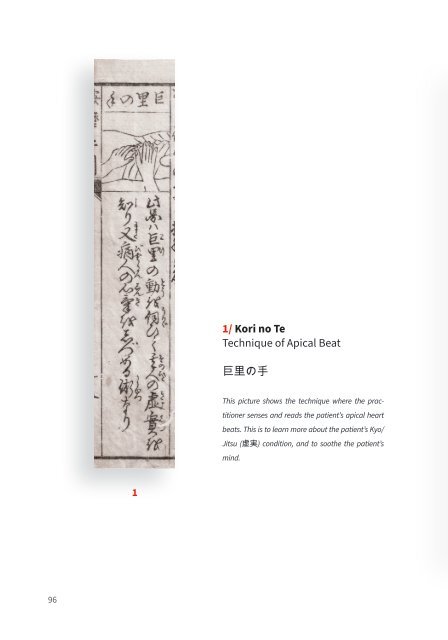Ampuku Abdominal Acupressure
THE CLASSICS AT THE HEART OF JAPANESE BODYWORK Ampuku, or traditional Japanese abdominal treatment, is a highly refined form of manual therapy. Its origins are closely related to Anma practice and Ampuku provided the base of what later would become known as Shiatsu. In all the Japanese healing arts the abdomen or ‘Hara’ is seen as an important energetic centre of the body that should be part of any successful bodywork practice. Something that was emphasized by Shiatsu master Shinzuto Masunaga who saw Ampuku as a very important part of Shiatsu. He rightly emphasized that Ampuku could contribute enormously towards helping the critically ill and those patients who require calm but penetrating manipulation. Ampuku therapy not only allows the patient to remain tranquil, it also rehabilitates the patient’s internal functioning and is an important part of diagnosis. This book is for all manual therapists interested to deepen their practice, by offering access to the information on Ampuku contained in Ōta Shinsai’s ‘Ampuku Zukai’ and Fujibayashi Ryohaku’s ‘Anma Tebiki’, the two illustrated classics at the core of Japanese bodywork. More than the translations of these two major works this book offers a practical guide by Philippe Vandenabeele, a senior Shiatsu teacher and practitioner on how to apply the different Ampuku techniques and he unveils their deeper meaning. It will provide the manual therapist a unique opportunity to explore the healing potentials offered by this traditional Japanese healing art. Includes: First complete translation of the Ampuku Zukai in English together with the Illustrations of the original first edition of the Ampuku Zukai First translation of the chapters on Hara diagnosis and Ampuku from de Anma Tebiki Together with the illustrations of the original first edition of the Anma Tebiki Overview and explanations of all the acupressure points used in the Ampuku Zukai and Anma Tebiki An in-depth explanation of the techniques described in those two Edo period books. More information: www.shinzui-bodywork.com
THE CLASSICS AT THE HEART OF JAPANESE BODYWORK
Ampuku, or traditional Japanese abdominal treatment, is a highly refined form of manual therapy. Its origins are closely related to Anma practice and Ampuku provided the base of what later would become known as Shiatsu.
In all the Japanese healing arts the abdomen or ‘Hara’ is seen as an important energetic centre of the body that should be part of any successful bodywork practice. Something that was emphasized by Shiatsu master Shinzuto Masunaga who saw Ampuku as a very important part of Shiatsu. He rightly emphasized that Ampuku could contribute enormously towards helping the critically ill and those patients who require calm but penetrating manipulation. Ampuku therapy not only allows the patient to remain tranquil, it also rehabilitates the patient’s internal functioning and is an important part of diagnosis.
This book is for all manual therapists interested to deepen their practice, by offering access to the information on Ampuku contained in Ōta Shinsai’s ‘Ampuku Zukai’ and Fujibayashi Ryohaku’s ‘Anma Tebiki’, the two illustrated classics at the core of Japanese bodywork.
More than the translations of these two major works this book offers a practical guide by Philippe Vandenabeele, a senior Shiatsu teacher and practitioner on how to apply the different Ampuku techniques and he unveils their deeper meaning.
It will provide the manual therapist a unique opportunity to explore the healing potentials offered by this traditional Japanese healing art.
Includes:
First complete translation of the Ampuku Zukai in English
together with the Illustrations of the original first edition of the Ampuku Zukai
First translation of the chapters on Hara diagnosis and Ampuku from de Anma Tebiki
Together with the illustrations of the original first edition of the Anma Tebiki
Overview and explanations of all the acupressure points used in the Ampuku Zukai and Anma Tebiki
An in-depth explanation of the techniques described in those two Edo period books.
More information: www.shinzui-bodywork.com
Create successful ePaper yourself
Turn your PDF publications into a flip-book with our unique Google optimized e-Paper software.
<strong>Ampuku</strong><br />
1/ Kori no Te<br />
Technique of Apical Beat<br />
巨 里 の 手<br />
This picture shows the technique where the practitioner<br />
senses and reads the patient’s apical heart<br />
beats. This is to learn more about the patient’s Kyo/<br />
Jitsu ( 虚 実 ) condition, and to soothe the patient’s<br />
mind.<br />
Once the practitioner has understood the illness<br />
inside the belly, by studying the previous illustrations<br />
that show how to perform Fukushin, they<br />
should practice <strong>Ampuku</strong> to cure those illnesses.<br />
However, if the practitioner is not skilled enough<br />
and is an unskilled <strong>Ampuku</strong> practitioner, it will<br />
damage organs rather than healing them. <strong>Ampuku</strong><br />
must be applied only after an elaborate, unhurried<br />
and thorough training.<br />
1<br />
Introduction<br />
<strong>Ampuku</strong><br />
96 97



